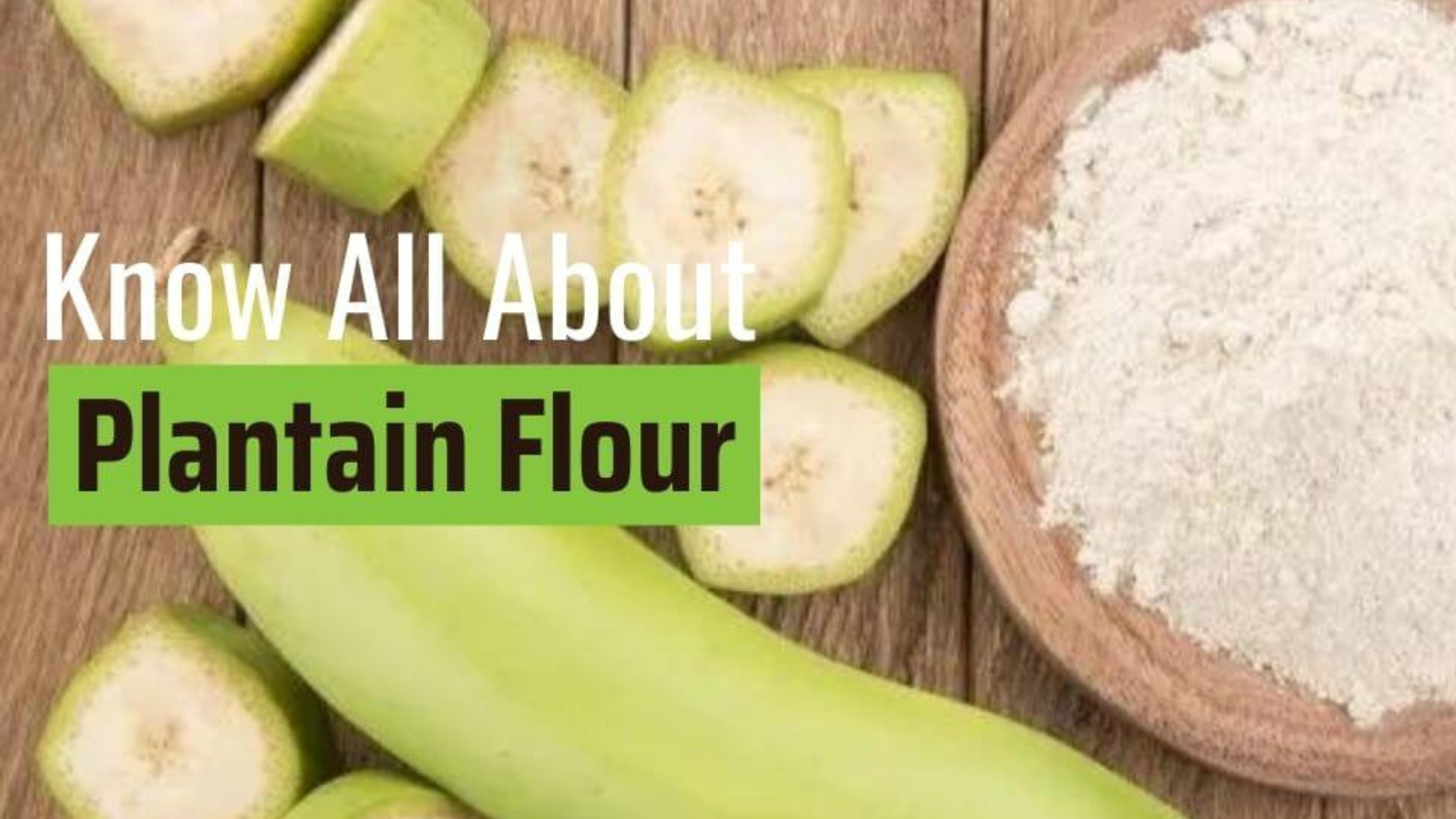Blog
Extruded Unripe Plantain Flour: Hard-to-Digest Carb-Rich Ingredient

Scientists are keen on developing ingredients that have high levels of indigestible carbohydrates. Unripe plantain flour (UPF) is one such ingredient. It contains type II resistant starch (RS). However, the RS content in UPF decreases after being cooked with wet heat. To address this issue, researchers studied the potential of creating an extruded UPF-based ingredient that retains its starch digestibility features and high dietary fiber content.
Extruded Plantain Flour: A Fiber-Rich Ingredient
The use of plantain flour (UPF) is gaining popularity as a source of dietary fiber. This is because of its high indigestible carbohydrate content. Resistant starch (RS) is the main component. However, when UPF is incorporated into heat-treated foods like baked goods, its indigestible carbohydrate content decreases due to RS conversion to digestible starch.
To overcome this issue, extrusion was used to prepare a fiber-rich ingredient from unripe Organic plantain flour that can be added to foods like yogurt without further cooking. The extruded UPF retained high RS content and non-starch polysaccharides in the fiber fraction, making it a viable alternative for the production of functional ingredients with important dietary fiber content.
When added to yogurt, the extruded flour did not affect the viscosity of the product. It also showed a low rate of starch digestion. The extrusion process could be an effective way to produce functional ingredients with high dietary fiber content.
Ingredients-UPF:
The researchers made flour from unripe plantains grown in Tuxtepe, Oaxaca, México. They used methods described by Ovando-Martinez et al. and Patiño-Rodriguez et al. to make flour from both the pulp and the pulp and peel of the plantains.
Please note UPFW stands for “unripe plantain flour whole fruit”, while UPFP stands for “unripe plantain flour pulp”. These two types of flours made from unripe plantains, were used in this study to add nutritional and functional properties to yogurt.
Extrusion Process:
The UPF from both pulp and peel were put through a machine called a single screw-extruder. The machine was set to a constant speed of 75 rotations per minute. The temperature of 50°C was set in three different areas of the machine. This temperature was chosen because it gave the right texture without cooking the starch in the plantain flour too much. The researchers made 2 batches using each type of flour.
Differential Scanning Calorimetry (DSC)
The scientist tested how the flour changes when it is cooked in water by using equipment that measures temperature and energy. They mixed a small amount of the flour with a little water and let it sit overnight. Then they put it into the machine and slowly heated it. They looked at the temperature where the flour started to change and how much energy was needed for the change. Scientists have made use of the Differential Scanning Calorimetry (DSC) method. This technique measures the heat flow in a material when it is heated or cooled. It is useful to understand the thermal properties of the material.
Total Dietary Fiber:
The amount of total dietary fiber (TDF) in the raw and extruded samples was measured using two methods that simulate the body’s digestion process. The two methods used were the enzymatic method proposed by McCleary et al. and the AACC method 32-05.
Total and Resistant Starch:
The amount of total starch (TS) was measured with a kit from Megazyme. The amount of resistant starch (RS) was determined with another kit from the same company, using methods described by the AACC.
Pasting Profile:
The way the flour changes when cooked was tested using a special machine that can measure stress (force) and temperature. A stress rheometer (AR-1500ex, TA Instruments, Dallas, TX, USA) with a starch pasting cell (SPC) and a vanned rotor was used to evaluate the pasting profile during cooking. The machine heated the flour gradually, held it at a high temperature, and then cooled it down. The test used an 8% flour concentration.
Determination of Water Retention Capacity of the Flour Sample:
To determine the water retention capacity of the unripe Organic plantain flour samples, 5 ml of water was added to 0.25 g of the samples (raw and extruded) and heated at different temperatures (40–80°C) for 15 min before centrifuging and calculating the percent gain in weight. The Hallgren method was used for this analysis and experiments were performed twice.
Determining the Oil Absorption Capacity:
To determine oil absorption capacity (OAC), the UPF was mixed with vegetable oil, stirred, and centrifuged. The amount of oil absorbed was calculated as the weight of residue per gram of dry sample.
OAC(g/g) =Wr/Wi
Where:
OAC is Oil absorption capacity.
Wr=residue weight
Wi=sample weight
Viscosity Measurement:
To test the effect of adding plantain flours on yogurt viscosity, an in-house-made yogurt was mixed with various concentrations of plantain flours. Viscosity measurements were taken at 25°C using a rheometer.
Starch Digestion:
This was tested using the method of Zheng et al. (15). A 100 mg dry starch sample was mixed with artificial saliva containing enzymes and incubated at 37°C for 30 minutes. This was followed by a second digestion step using pancreatin and amyloglucosidase. Glucose concentrations were measured at different time intervals and the amount of starch hydrolyzed was calculated.
Sensory Evaluation:
One hundred untrained judges used a 9-point hedonic scale to evaluate the acceptability of the yogurt’s flavor, texture, odor, and general acceptance, following the questionnaire by Agama-Acevedo et al. (16).
Observations and Results:
The gelatinization analysis of UPFP and UPFW revealed minor differences in average gelatinization temperatures.
The higher total starch content in UPFP than in UPFW resulted in a slightly lower degree of gelatinization. The extrusion reduced total starch and resistant starch contents. But the remaining high dietary fiber content suggests their potential use as functional ingredients.
The way the flour reacts to heat and water was tested. It was found that the flour from whole fruit had more substances that made it thicker and stickier. The extruded versions of both flours were not as thick. This is because some of the substances changed when heated.
Both raw flours had similar water retention capacities that increased with temperature. But UPFW had a higher capacity due to more starch and dietary fiber. Extruded UPFW also had higher capacity due to more starch and DF and a fraction of un-gelatinized starch.
The extruded plantain flours have the potential as a fat replacer, as they have a higher OAI due to the disorganization of starch components during extrusion. They can be compared to modified starches used in products with reduced-fat content.
Adding extruded plantain flours to yogurt increased its viscosity, especially with the UPFW extrudate.
The yogurt added with extruded UPFW and UPFP showed slower starch digestion compared to the gelatinized starch reference.
Control yogurt had the highest score in a sensory evaluation study, while yogurt with UPFW had the lowest acceptability possibly due to the presence of fruit peel. But the high dietary fiber content may attract consumers with flexible acceptability criteria.
Conclusion:
Extruding unripe plantains produce flours rich in indigestible carbs, with UPFW having more fiber, water retention, and solubility than UPFP. Adding these flours to yogurt slightly increases viscosity and starch hydrolysis, but slightly reduces acceptability. They have potential as functional ingredients in processed foods.

